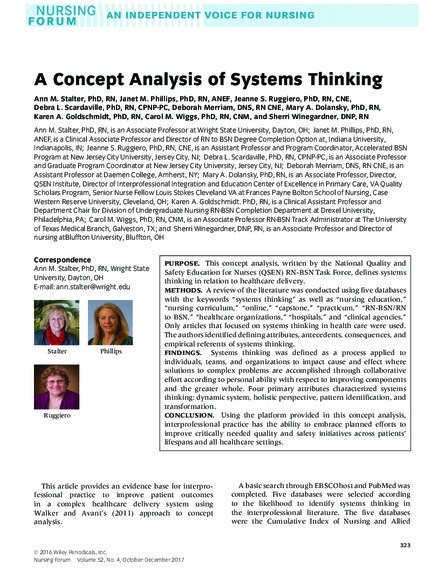
PURPOSE. This concept analysis, written by the National Quality and Safety Education for Nurses (QSEN) RN-BSN Task Force, defines systems thinking in relation to healthcare delivery.
METHODS. A review of the literature was conducted using five databases with the keywords “systems thinking” as well as “nursing education,” “nursing curriculum,” “online,” “capstone,” “practicum,” “RN-BSN/RN to BSN,” “healthcare organizations,” “hospitals,” and “clinical agencies.” Only articles that focused on systems thinking in health care were used. The authors identified defining attributes, antecedents, consequences, and empirical referents of systems thinking.
FINDINGS. Systems thinking was defined as a process applied to individuals, teams, and organizations to impact cause and effect where solutions to complex problems are accomplished through collaborative effort according to personal ability with respect to improving components and the greater whole. Four primary attributes characterized systems thinking: dynamic system, holistic perspective, pattern identification, and transformation.
CONCLUSION. Using the platform provided in this concept analysis, interprofessional practice has the ability to embrace planned efforts to improve critically needed quality and safety initiatives across patients’ lifespans and all healthcare settings.